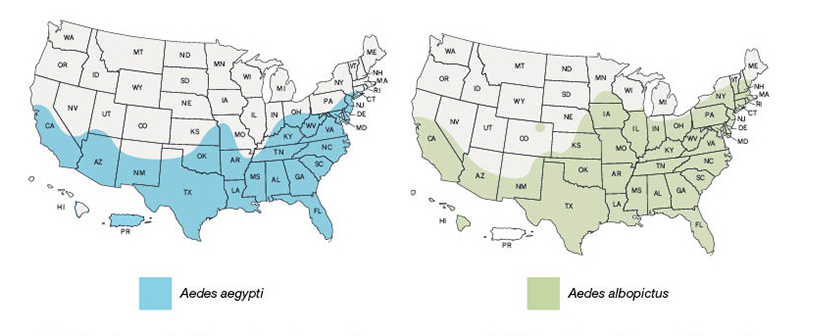Article
Zika Virus Outbreak May Spread to More US States
Author(s):
Concerns about Zika virus outbreaks have been centered on the Aedes aegypti mosquito, but now researchers have detected a new mosquito species carrying the virus, which could put more US states at risk for disease transmission.
Concerns about Zika virus outbreaks have been centered on the Aedes aegypti mosquito, but now researchers have detected a new mosquito species carrying the virus, which could put more US states at risk for disease transmission.
In late March 2016, the Arbovirus and Hemorrhagic Virus Laboratory of the Institute of Epidemiological Diagnosis and Reference in Mexico received Aedes albopictus, the mosquito species known as the “Asian tiger,” for Zika testing, according to the Pan American Health Organization. The laboratory confirmed in April 2016 that it did, in fact, find the Zika virus in Aedes albopictus mosquitoes, which marked the first time that the Zika virus was detected in mosquitoes that have a greater range in North America.
This finding could spur concern in the United States, where Aedes albopictus mosquitoes are more prevalent than Aedes aegypti mosquitoes.

These 2016 maps from the CDC show the potential range for the 2 mosquito types in the United States, although the CDC emphasized that they are “not meant to represent risk for spread of disease.” Shaded areas don’t necessarily indicate that Zika-carrying mosquitoes are in those states; rather, those are the states where the mosquitoes could potentially live and have been found in the past.
The CDC also noted that the Aedes aegypti mosquito is more likely to spread viruses like Zika than the Aedes albopictus mosquito.
“There are officials who have been saying we don’t have Aedes aegypti, so we don’t need to be worried or have a plan,” Janet McAllister, an entomologist at the CDC, recently told The Washington Post. “What CDC is saying is: you need a plan in place because albopictus could transmit Zika in your area, and you need to take it seriously.”
Although the CDC needs more time to determine the severity of the threat, it's urging officials in northern US states to prepare for a potential Zika virus outbreak.
Here’s what would need to happen in order for either mosquito species to cause a Zika outbreak in the United States:
1. Individuals infected with Zika virus enter the United States.
2. In the first week that the individuals are infected, which is when the virus can be detected in the blood, Aedes aegypti or Aedes albopictus mosquitoes bite them and pick up the virus.
3. The mosquitoes, which are now carrying the Zika virus from infected individuals, live long enough to multiply and bite more individuals.
4. This cycle continues.
Of note, a 2007 manuscript published in Vector-Borne and Zoonotic Diseases described Aedes albopictus as the “most invasive mosquito in the world.” The mosquitoes are small and black, with a white dorsal stripe and banded legs, and they can transmit dengue fever and chikungunya, as well as Zika.
The larvae and pupae can survive in flower pots, plates under potted plants, urns and vases, buckets, rain gutters, bonds, bird baths, and water bowls for pets, according to the CDC. As adults, their peak feeding time is in the early morning and late afternoon.
“This mosquito has a rapid bite that allows it to escape most attempts by people to swat it,” the CDC stated.
Pharmacists should advise their patients to follow CDC recommendations by throwing away water-holding containers and cleaning items like birdbaths and pet dishes on a weekly basis. In addition, patients should wear long-sleeved clothing, socks, and shoes when the mosquitoes are most active, and also apply bug repellents on exposed skin.
Denise J. Jamieson, MD, medical officer in the CDC’s Division of Reproductive Health, previously told Pharmacy Times that pharmacists could be great resources for patient education on the Zika virus.
“Many travelers visit their pharmacy before trips abroad to fill prescriptions, get immunized, or buy other OTC medications,” Dr. Jamieson said. “That visit to the pharmacy could provide a great opportunity for patient education about Zika virus transmission and other infectious disease risks.”





